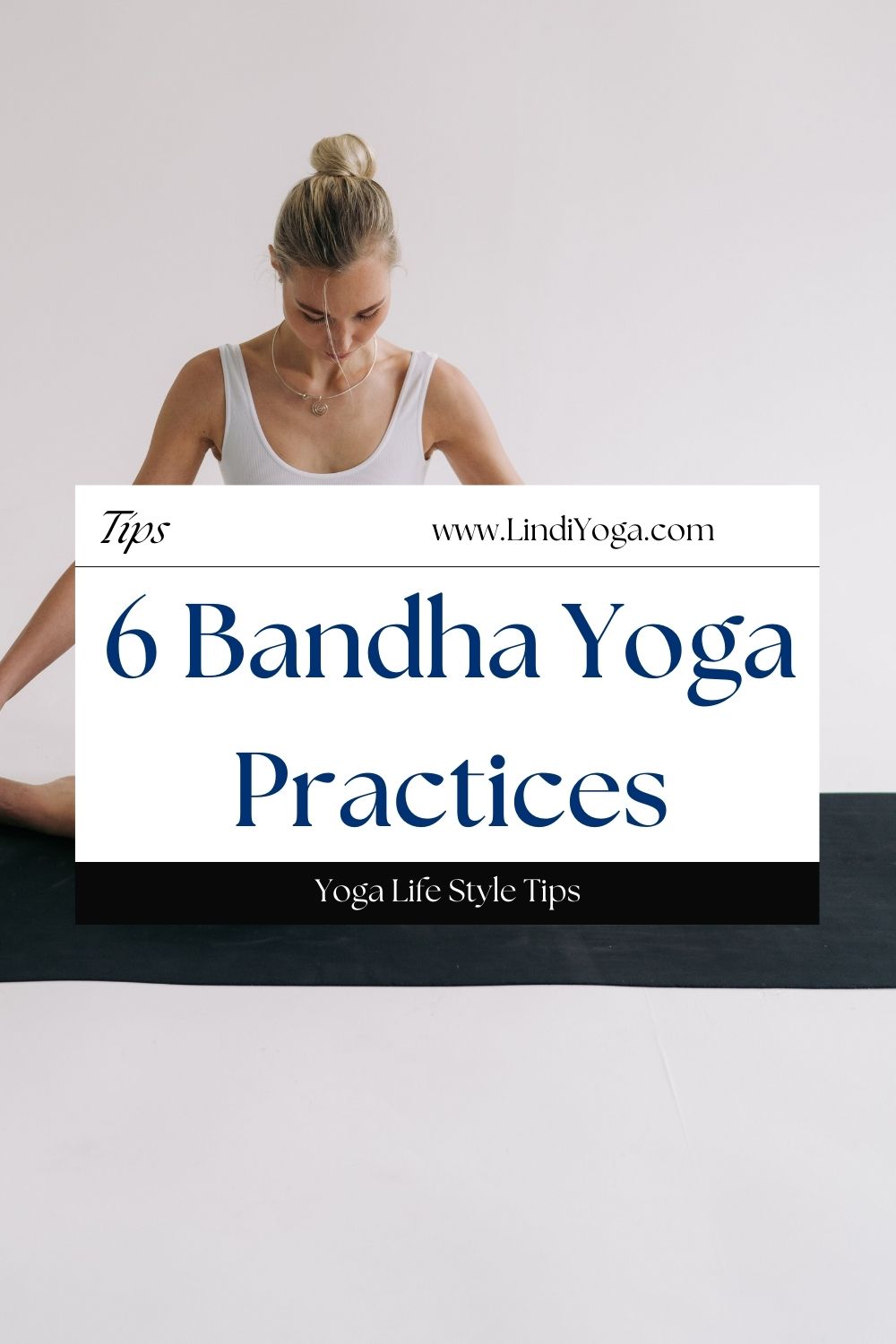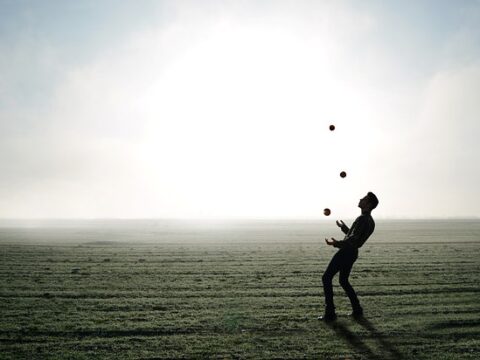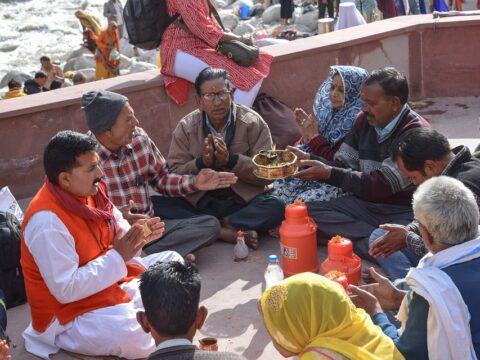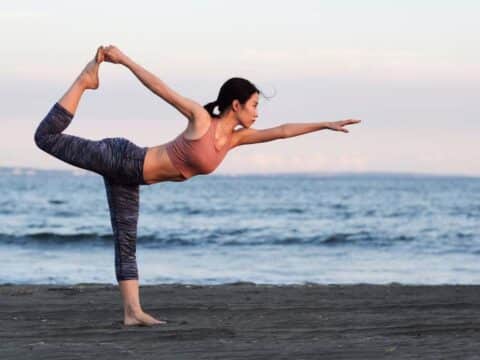A bandha is a type of body lock that is often used in yoga. There are four main types of bandhas, and they are often used in conjunction with each other. The four main types of bandhas are: mula bandha, uddiyana bandha, jalandhara bandha, and bhujangasana bandha. Bandhas can be used to help improve your yoga practice by helping to engage and support your core muscles, improving your alignment, and providing stability and balance.
If you have been pursuing yoga for a while, you have probably heard about bandhas. Bandhas are energetic locks, used to control the flow of energy in the body. Though it is commonly accepted that bandhas are locks, not everyone agrees on what they are made of. Some say that they are made of sun and moon energy, while others say the sun and moon are what the bandhas lock in.
Why are bandhas important from a yin perspective? Stick with me to find out how beneficial they can be in yoga and everyday life, especially for people with lower back problems.
Podcast
https://youtu.be/8LJHCep-JU8
We were discussing bandhas and how they are commonly thought of as locks. Swami Satyananda Saraswati defines bandhas as meaning to hold, lock, or tighten, with the purpose of redirecting the flow of prana for spiritual awakening. However, B.K.S. Iyengar has a different view of bandhas, describing them as safety valves that should be kept shut during kumbhaka, or the retention of breath. Ashtanga teacher David Swenson also uses the metaphor of energy gates or valves, likening them to the way the heart regulates the flow of blood.
The following text is about how bandhas help to direct and hold energy in yoga practices. Bandhas are like valves that help to control the flow of energy in the body. Each bandha helps to control energy in a different part of the body.
The five Bandhas are important to understand in order to gain control of your body.
Yoga has been around for thousands of years, and is one of the most popular forms of exercise today. Most people consider it to be a form of relaxation, and it certainly can be. But did you know that yoga also involves gaining control of your body?
The five Bandhas are a series of internal exercises used to strengthen your muscles and improve circulation, and are a major part of yoga. When you learn these bandhas, you will be able to move more easily and improve your overall health.
5 Bandhas
Here are five bandhas, followed by a simple explanation of each.
Mulabandha
The Mulabandha is performed by holding your tongue in between your teeth. This will cause the muscles in your throat to contract, which will cause your breath to become restricted. You will feel the effects of the bandha in your face and jaw.
The Mula bandha is done by contracting the muscles in your lower abdomen, and using those muscles to pull your navel towards your spine. This will cause your stomach to draw inward, which will cause you to feel more relaxed and grounded. Mula bandha is performed by contracting and lifting inward and upward the muscles of the perineum. Mula bandha helps to maintain celibacy by sublimating sexual energy and raising it to higher chakras.
Uddiyana Bandha
It is highly exalted among all other bandhas. In order to perform this bandha, you must “contract the abdomen above and below the navel and toward the back”. It is recommended that you do this while sitting on your heels.
The Uddiyana bandha is done by stretching your arms and legs upward, and lifting your body upward. As you stretch, your breath becomes restricted, which will help you to concentrate on your breathing.
Maha Bandha
The Maha bandha is a strong contraction of the muscles in your pelvic region, which will cause your belly to rise up. It will help you to relax and gain control over your body.
Jalandhara Bandha
The Jalandhara bandha is similar to the uddiyana bandha, but it is done by lifting your head back slightly, instead of upward. The jalandhara bandha will help you to feel more focused and energized.
Jalandhara bandha is one of the most important and difficult ones. The idea behind this yoga pose is to relax the anus and rectum, and bring the whole abdominal region into a state of calmness. In order to perform this exercise effectively, you must have the correct alignment of the body.
Jalandhara bandhas are considered to be one of the major core energy locks in yoga.
6 Bandha Practices
If you don’t feel you’re access the bandhas on the first try, don’t worry. Just as you need to practice a difficult asana many times before you can access the full pose, it takes time to fine-tune your attention to feel the bandhas. This basic sequence is a great starting point, and you will eventually have an “aha” moment when you feel the bandhas in your body.
Ardha Uttanasana (Half Standing Forward Bend)
Half Standing Forward Bend is a great pose for building strength in the arms and chest. In fact, if you can balance here, it is a great pose for balancing any pose on the mat.
Half Standing Forward Bend helps strengthen the back muscles as well. This makes the spine stronger, which can lead to improved flexibility.
The Half Standing Forward Bend is one of the easiest poses in the series of the five primary standing postures of Ashtanga Vinyasa Yoga. This pose is performed using the legs, and it helps strengthen the hips, thighs, and legs.
The benefits of practicing this pose include relieving lower back and abdominal tightness, improving balance, strength, and posture. It also improves circulation in the legs, which can aid in preventing arthritis and other degenerative diseases.
Practicing this pose every day will also enhance your overall health and vitality.
If you want a strong and supported core, you need to focus on more than just your abs. If you want a strong and supported core, you need to focus on more than just your abdominal muscles.
Tadasana (Mountain Pose)
Tadasana or Mountain pose is one of the most important yoga poses. It is known as the king of yoga postures, as it is considered to be the base of the entire system of yoga. Here is the basic and simple explanation about the Tadasana or mountain pose and how to do it.
The Mountain Pose is the first posture of yoga. It represents the foundation upon which everything else is built. When you start your yoga practice you will be starting with the Mountain Pose.
What does the Mountain Pose look like?
If you stand in front of a mirror, what do you see? The image that you see is actually your body in a slight position of Mountain Pose. You may not be able to feel it, but that’s ok. You have an opportunity to experience the effects of the pose, and that will help you develop a strong practice.
Marjaryasana (Cat Pose)
In yoga, bandha means “lock,” and refers to the various muscular locks that we use to control our breath.
Marjaryasana (Cat Pose) is an asana in which you inhale through the nose and exhale through the mouth, like a cat purring.
The word “cat” has also been used to describe the face, in the sense of a friendly face that is smiling, but the cat face is not actually smiling. In yoga, the expression of the face does not matter as much as the smile.
It strengthens the muscles of the face, which allows us to show a smile when we want to.
Practice this pose as often as possible to strengthen your facial muscles, which will help you to smile naturally when you want to.
The goal of this exercise is to bring happiness, peace, love, and calm to your life.
Adho Mukha Svanasana (Downward-Facing Dog Pose)
Here is a simple yoga pose that you can practice from home to keep yourself flexible and limber. It’s a wonderful way to stretch out your legs and hips, and will also help you build strength and endurance.
You will feel your body becoming more flexible and limber as you practice this pose. As you become more limber, you will notice that you can perform more yoga poses easily. If you find it difficult to keep your hips level, you can also try standing in front of a wall, or lying on a yoga mat.
Try this pose when you have sore muscles or after you have been doing heavy work. You can practice this pose daily, and gradually work up to longer periods of time.
Eka Pada Rajakapotasana (One-Legged King Pigeon Pose)
There are a lot of poses in yoga that focus on strengthening your core. And one of the best ones to learn is the One Legged King Pigeon Pose (Eka Pada Rajakapotasana).
This is one of the most popular yoga poses because it’s such an effective exercise, and it’s very easy to learn. In fact, you don’t even need any props to do this pose, which makes it perfect for beginners.
As you can see, this pose is very challenging, but it’s also very rewarding. You get to learn to control your balance and develop strong abs, and it’s also a great core workout.
Paschimottanasana (Seated Forward Bend)
In order to learn any asana, it is important to understand its physiology, anatomy and how it moves the body. We will start with a look at how this pose moves the body and how it aligns the spine.
To begin, let’s look at the pelvis and legs. The hips act like a hinge, which allows for extension and flexion. This pose is all about extension, so it is important to keep the knees slightly bent as you move deeper into the pose.
The thighs and hamstrings are the biggest muscles in the body. When we extend the spine, these muscles become very active. This position allows us to stretch the hamstrings and thigh muscles by extending the spine.
The shoulders and upper back are also very important, as they support the weight of the upper body. As you bend forward, your elbows should remain slightly bent and slightly forward. This will help to support the weight of the torso.
Beginners often have trouble keeping their knees straight, so this is a great pose to start with. However, if you want to progress further, it is essential that you learn how to balance and move your feet in a strong manner.
As you reach the end of the pose, be sure to focus on drawing the shoulders back towards the midline of the body. This will allow the chest to open and help you to breathe more deeply.




